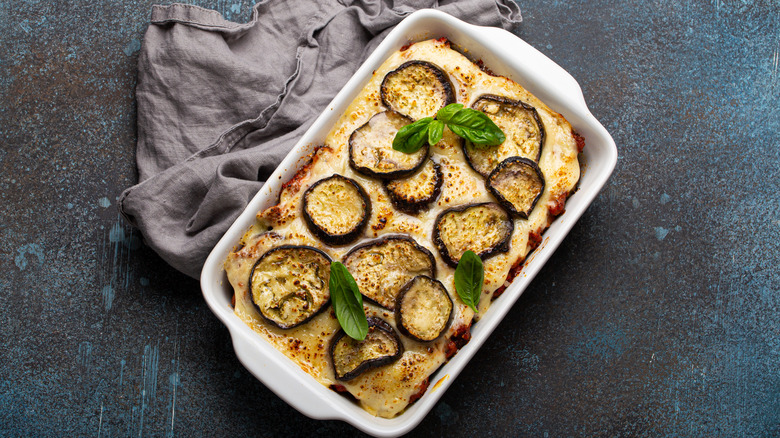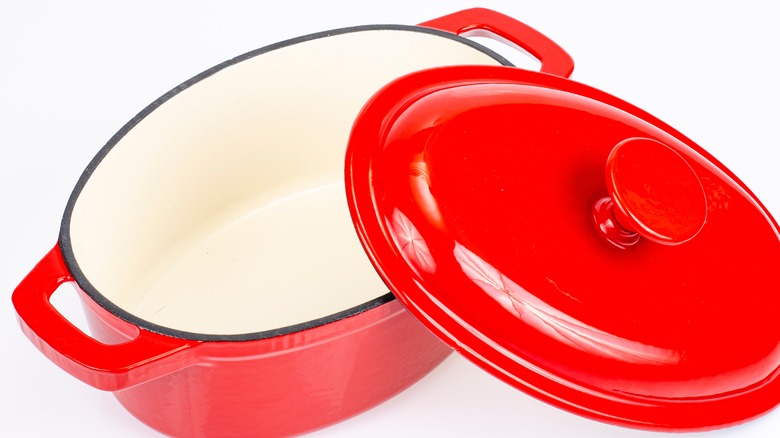The Best Methods To Reduce Oven Time For Casseroles
The humble casserole is a one pan wonder — it serves as a side dish like a broccoli cheese casserole, main course such as a lasagna, or a decadent dessert. Whether they're prepared for a make ahead meal, weeknight dinner, or to feed a crowd at a potluck, casseroles are a comforting, delicious, and versatile dish. As varied and convenient as the end result can be, there are a few drawbacks to casseroles. They're wonderful when they're prepared flawlessly, but ask anyone that has made an overcooked or soupy casserole and they're likely to tell you a lot of work and time went into preparing it only to have it fail.
As detailed by MyRecipes, casserole blunders occur when you have a burnt top layer and undercooked filling or perhaps worse, rice, noodles, or vegetables turning to mush. If you've continuously had a problem with the filling turning out either mushy or undercooked, then try par-cooking beforehand. To par-cook something is to partially cook it, and as detailed by Martha Stewart, par-cooking pasta and vegetables is a way to ensure your casserole turns out perfect.
Choosing the right dish
Another method that you can incorporate the next time you're making a casserole that will reduce your oven time, as well as help reduce your failure rate, comes down to what you're cooking it in. It's worth investing in some time before you cook and making sure your casserole is in the right-sized dish. According to Allrecipes, using the correct size can save on baking time, which will in turn help reduce over or undercooking.
As noted by Eat This, Not That!, you should only fill your dish to three-quarters of its height, so placing your casserole into a standard 9 x 13 baking dish and putting it into the oven isn't the best plan. The next time you make a casserole, remember with some thoughtful planning ahead and adhering to these casserole tips, you can reduce the time it takes to bake your casserole and end up with a better end product, too.

